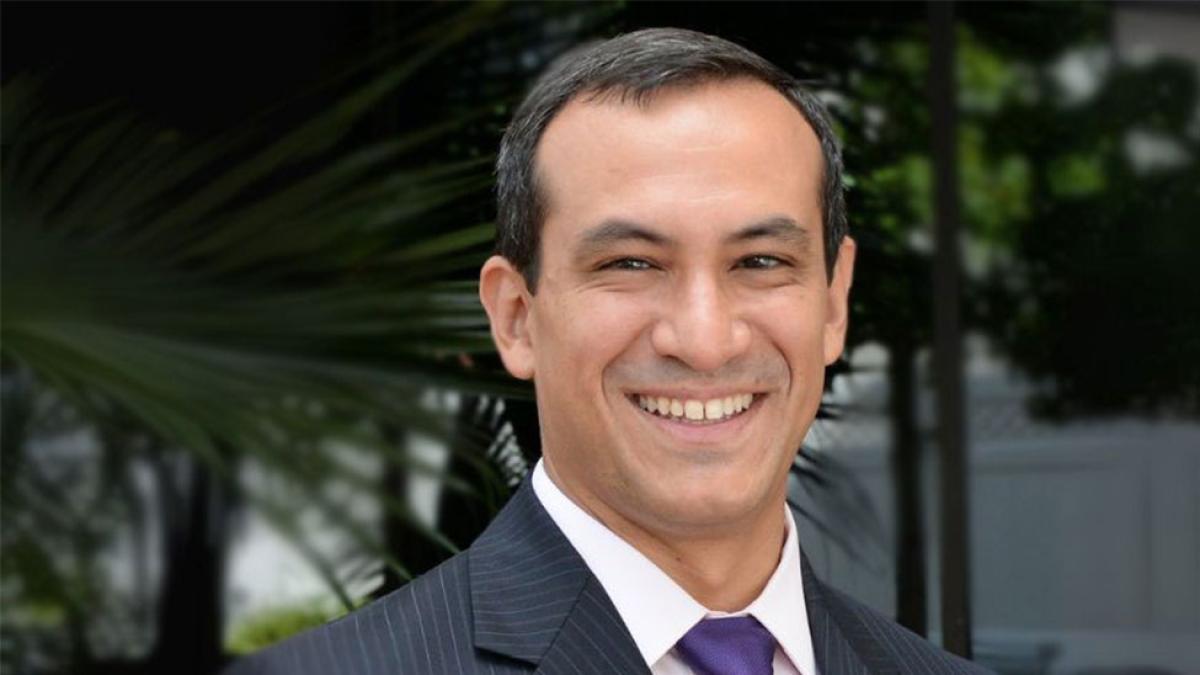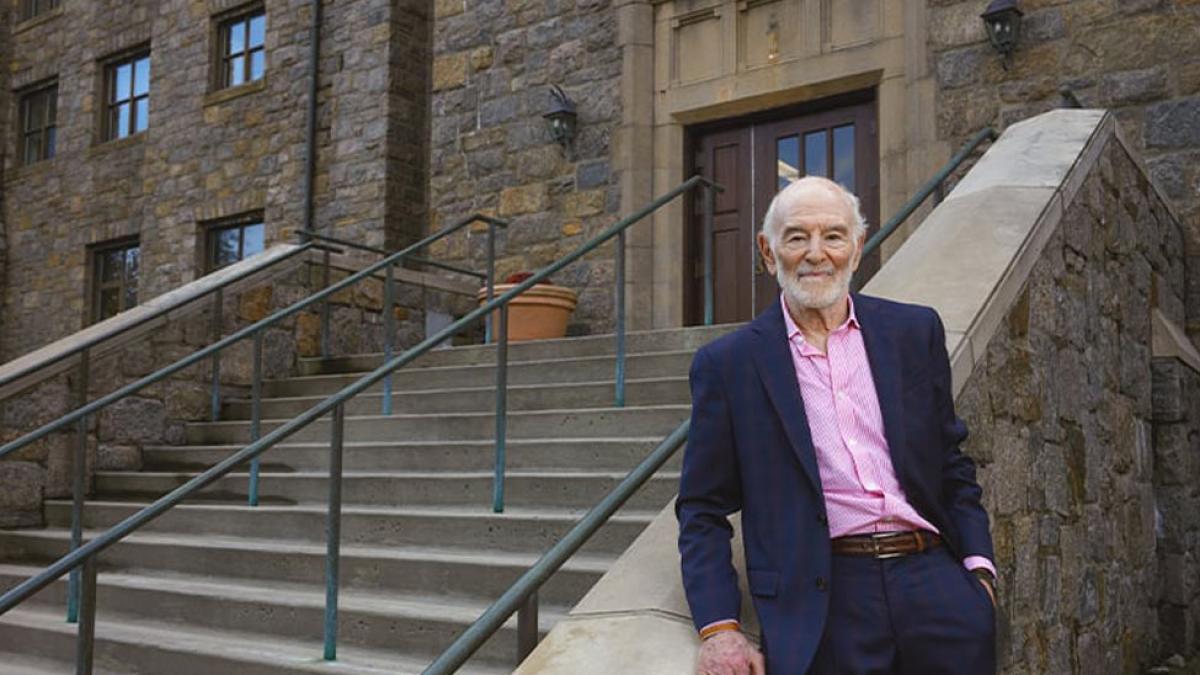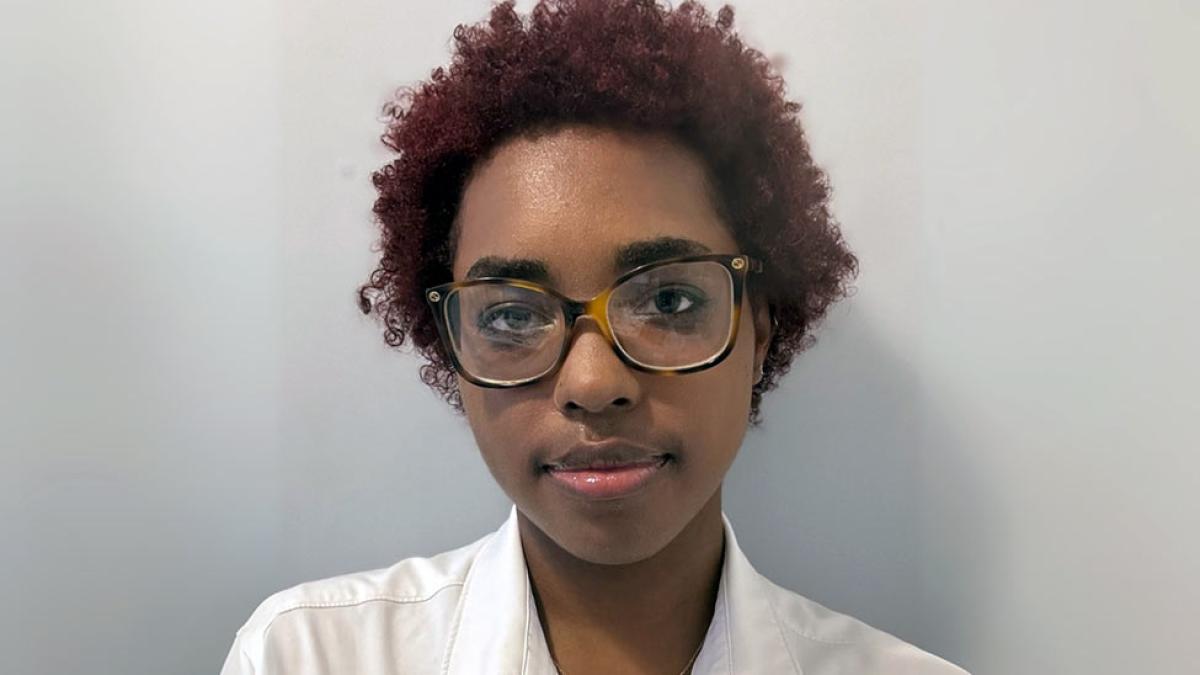
Professor Alexander K.A. Greenawalt appointed James D. Hopkins Professor of Law for 2025–2027
The Elisabeth Haub School of Law at Pace University is pleased to announce that Professor Alexander K.A. Greenawalt has been appointed as James D. Hopkins Professor of Law for the 2025–2027 term.


The Elisabeth Haub School of Law at Pace University is pleased to announce that Professor Alexander K.A. Greenawalt has been appointed as James D. Hopkins Professor of Law for the 2025–2027 term.
The title of James D. Hopkins Professor of Law is awarded to a member of the faculty for a two-year term in recognition of outstanding scholarship and teaching. The designation is considered to be among the Law School’s most significant faculty honors. During the holder’s term, the James D. Hopkins Professor delivers a lecture that is open to the entire law school community and members of the public.
“Professor Greenawalt joined the Pace Haub Law faculty in 2006 and has contributed tremendously to the Law School in the last nearly twenty years. His scholarship in criminal law, international law, and the laws of war has been published in prestigious law journals and recognized by his peers (including with Pace Haub Law’s distinguished Goettel Prize for Faculty Scholarship in 2024, 2018, and 2016). He was also previously honored with the Richard Ottinger Faculty Achievement Award in recognition of his outstanding service to the law school and the legal profession. We are honored to have Professor Greenawalt serve as our next Hopkins Professor,” remarked Dean Horace E. Anderson Jr.
Prior to joining the faculty of Pace Haub Law, Professor Greenwalt was an attorney with the firm Debevoise & Plimpton LLP, where his practice focused on international disputes. He was a teaching fellow at Columbia Law School in 2005 and was previously a clerk for the Honorable Stephen F. Williams of the U.S. Court of Appeals for the District of Columbia Circuit. Professor Greenawalt is a graduate of Columbia Law School, where he was a James Kent Scholar and Articles Editor of the Columbia Law Review.
At Pace Haub Law, Professor Greenawalt previously served as the Stevens Family Faculty Scholar and has taught Constitutional Law, Criminal Law, International Law, Administrative Law, International Criminal Law, United States Foreign Relations Law, and National Security Law. His recent publications include ‘With Intent to Destroy, in Whole or in Part’: Genocide, Ethnic Cleansing, and A Lost History, published in the Wisconsin Law Review in 2024. He was a Visiting Professor at Columbia Law School during the Spring 2017 semester, and has also been a Visiting Professor at St. John’s Law School.
The James D. Hopkins Professor of Law is an endowed chair, which was established with contributions from alumni of the Elisabeth Haub School of Law at Pace University and members of the legal community in honor of Judge James D. Hopkins, who served as Interim Dean of the Law School from 1982 to 1983. His distinguished service to society and to the legal community was a shining example of the life one should live in the law.
Immediately prior to the appointment of Professor Greenawalt, Professor Margot Pollans served as the James D. Hopkins Professor of Law. Learn more about the James D. Hopkins Professor of Law chair and its past recipients.
Can Podcast Metrics Be Trusted?
Lubin Professor Chiagouris weighs in on podcast engagement metrics, noting that incentivized downloads may distort actual listener interest.
How Bird Migration Affects The Spread Of Avian Flu
Environmental Studies and Science Conservation Center Manager Jacob Reiter speaks to WSRYR-TV about how fall bird migration may impact avian flu patterns. Reiter, a licensed wildlife rehabilitator and NYS conservationist, discusses implications for wildlife management— the story gets picked up by Yahoo News and The Extinction Chronicles.
Most Fun States in America (2025)
Lubin Professor Andrew Coggins Jr. provides expert insight to WalletHub’s annual ranking of the Most Fun States in America, highlighting travel trends and leisure metrics.
Popular Chinese Brands Look To Brew Success In US Despite Tariff Threats
Marketing Professor Larry Chiagouris speaks to Channel News Asia about how younger U.S. consumers are more price-conscious and willing to try new brands.
Defunding The IRS Is Like Cutting Police Resources During A Crime Wave
Lubin Professor Philip Cohen pens an op-ed in The Journal News warning that cutting IRS funding would lead to increased fraud and revenue losses. He argues the agency is crucial to maintaining tax system integrity and compares cuts to defunding police amid a crime surge— the story gets picked up by Times Herald-Record, Poughkeepsie Journal, Times Telegram, The Democrat and Chronicle, Asbury Park Press, and more.
Second Circuit’s NFL Arbitration Ruling Extends to the Boardroom
Pace Haub Law Professor Imre Szalai provides expert commentary to Bloomberg Law regarding the Second Circuit’s recent decision in Flores v. New York Football Giants, Inc., which struck down the NFL’s arbitration provision giving Commissioner Roger Goodell final authority over discrimination disputes. Highlighting why commissioner-controlled arbitration fails in civil rights contexts, Professor Szalai explained: “Goodell would be a perfect decision maker about sports rules, like the notorious Tom Brady ‘Deflategate’ case, but not for a legal claim.”

White House Sending Social Media Teams With FBI On Some Arrests In D.C., Sources Say
- Read more about White House Sending Social Media Teams With FBI On Some Arrests In D.C., Sources Say
Elisabeth Haub School of Law Professor Bennett Gershman speaks to Reuters about the reported use of social media teams during FBI arrests in D.C. “It’s an outrageous tactic for promotional purposes,” he said, calling it constitutionally and ethically problematic— the story garners national and international pickup.

Press Release: Pace University’s Sands College of Performing Arts Welcomes Three Acclaimed New Faculty Members
Pace University’s Sands College of Performing Arts today announced the appointment of three distinguished artists to its faculty for Fall 2025: Tony Award nominee L Morgan Lee as clinical assistant professor of musical theater, Broadway performer Shonica Gooden as clinical assistant professor of commercial dance, and Broadway stage manager Matthew Stern as clinical assistant professor and program head of stage management.

Tony nominee L Morgan Lee, Broadway veteran Shonica Gooden, and renowned stage manager Matthew Stern join faculty this fall

Pace University’s Sands College of Performing Arts today announced the appointment of three distinguished artists to its faculty for Fall 2025: Tony Award nominee L Morgan Lee as clinical assistant professor of musical theater, Broadway performer Shonica Gooden as clinical assistant professor of commercial dance, and Broadway stage manager Matthew Stern as clinical assistant professor and program head of stage management.
“These extraordinary educators bring unparalleled professional experience and a passion for nurturing emerging talent,” said Jennifer Holmes, dean of the Sands College of Performing Arts. “Their artistry, leadership, and commitment to students will further elevate the exceptional training we offer here at Sands.”
The appointments come at a pivotal time for Sands College, which continues to gain national recognition for its programs in acting, directing, musical theater, commercial dance, production and design for stage and screen, and stage management. Sands College is recognized by Playbill as one of the top 10 most represented colleges on Broadway for the 2023–2024 season; named by Backstage.com as one of the top acting colleges you should know; and ranked among The Wrap’s top 20 great schools for acting and theater.
Sands is preparing to open a new state-of-the-art Performing Arts Center as part of Pace’s renovation of One Pace Plaza East and the transformation of its campus in lower Manhattan.
L Morgan Lee
Lee is an award-winning actress, emerging director, writer, and educator. She made history as the first openly trans actor to be nominated for a Tony Award for her standout turn in the Pulitzer Prize–winning A Strange Loop on Broadway. The role also earned her an Obie Award, along with Drama League and Lucille Lortel Award nominations. Her studio work includes The Sugar Maple Series (Osiris Media), Drama: An Aural Experience (AKS Immersive), and recordings with Ghostlight Records, Broadway Records, Sh-K-Boom Records, and the Grammy-nominated A Strange Loop Original Broadway Cast Recording.
As a theatre-maker and educator, Lee brings a distinct and nuanced perspective to storytelling—illuminating identity and the complexities of the human experience through lenses often overlooked. Her writing has appeared in Playwrights Horizons’ Almanac (Vol. 03), When the Lights Are Bright Again, and Musical Theatre Today (Vol. 2). Her short play The Learning Curve was presented in BLISS, the finale of the 2023 Breaking the Binary (BTB) Theatre Festival at The Public Theater and is published by Broadway Licensing. She is a recipient of the Mark O’Donnell Prize and a 2024 HRC Visibility Award.
"We are shaping young artists who may one day become some of the brightest lights on Broadway and beyond,” said Lee. “I'm thrilled for a fuller opportunity to walk alongside them—to help nurture their individual voices, refine their craft, as well as share lessons I've gathered (and continue to learn) from over more than two decades in this industry. Pouring into their artistry is not simply a job; it’s a privilege that I carry with the deepest of respect and gratitude.”
Shonica Gooden
Gooden, a multi-hyphenate artist from Atlanta, is currently a member of the Broadway company of Hamilton: An American Musical (original cast). She has appeared in some of Broadway’s most acclaimed productions, including CATS (Rumpleteazer, Broadway revival), and Bring It On: The Musical (Broadway and First National Tour). Her credits also include Rodgers and Hammerstein’s Cinderella, Memphis (Felicia, Cape Fear Regional Theatre), the national tour of Matilda The Musical, Sister Act (Deloris, Music Theatre Wichita), and Don’t Bother Me, I Can’t Cope (City Center Encores!).
Gooden’s screen appearances include Fosse/Verdon, Manifest, and Almost Family, Ted 2, The First Purge, and The Dutchman. Gooden is also the Executive Artistic Director of The Black Artists Dance Collective (TBADC), a community arts nonprofit organization based in Atlanta, GA. The mission of TBADC is to provide Atlanta's BIPOC Dance Community with resources and opportunities through education and community engagement.
“When I attended the 2025 Senior Dance Showcase, I loved the fact that you could tell that there’s a major value placed on individuality and artists' identity at Sands College,” said Gooden. “Not one dancer is the same. This isn’t a program for cookie cutter dancers, it’s a program for dancers that understand that versatility and sharing your true self through your artistry are the keys to your success in this industry. It excites me to be an educator in a program that champions those values!”
Matthew Stern
Stern is a veteran Broadway stage manager with credits on more than 20 productions, including Come From Away, Finding Neverland, On the Town, Spider-Man: Turn Off the Dark, An Evening with Patti LuPone & Mandy Patinkin, The Little Mermaid, Wicked, The Phantom of the Opera, The Full Monty, and Death of a Salesman. His career also includes the Radio City Christmas Spectacular, Blue Man Group at the Hollywood Bowl, national tours such as John Lithgow’s Stories By Heart, Billy Crystal’s 700 Sundays, Les Misérables, Grease, and In the Fiddler’s House with Itzhak Perlman, as well aswork in dance with Martha Graham Dance Company and Ballet Iowa, and corporate events for global clients in the tech, finance, and auto industries.
Stern is the founder of the Broadway Stage Management Symposium, a professional development platform for stage managers, and serves on the board of The Stage Managers’ Association, USA. He is committed to fostering leadership, collaboration, and creativity in the next generation of stage managers.
“I'm thrilled to work alongside the highly regarded faculty at Pace to help train future generations of artists,” said Stern. “Working with young adults is a great responsibility. As the head of the stage management program at Pace, I welcome the opportunity to educate and support stage managers in their journey to find their voice, develop their aptitude for leadership, and advocate for themselves and the artists they support. I look forward to continuing the great traditions and standards at Pace and instilling valuable leadership qualities for people and organizations to thrive.”
About Pace University
Since 1906, Pace University has been transforming the lives of its diverse students—academically, professionally, and socioeconomically. With campuses in New York City and Westchester County, Pace offers bachelor, master, and doctoral degree programs to 13,600 students in its College of Health Professions, Dyson College of Arts and Sciences, Elisabeth Haub School of Law, Lubin School of Business, Sands College of Performing Arts, School of Education, and Seidenberg School of Computer Science and Information Systems.
About Sands College of Performing Arts
Sands College of Performing Arts is a cutting-edge performing arts school that nurtures artistic innovation and develops future leaders and changemakers in the profession. Renowned for its diverse range of highly-ranked programs, Sands College is committed to cultivating top-talent performers, designers, and production professionals. From Hollywood to Broadway, Sands College students and alumni have appeared in major film and television productions and theater performances such as & Juliet, A Beautiful Noise, A Strange Loop, Almost Famous, Hadestown, Hamilton, Kimberly Akimbo, MJ The Musical, Moulin Rouge, Ohio State Murders, Wicked, and the Radio City Christmas Spectacular. Recognized by Playbill as one of the 10 most represented colleges on Broadway, Sands College continues to inspire the next generation of artists on stage and screen.
Designing Her Path in Digital Marketing
From hands-on client work to behind-the-scenes content shoots, Skye Tchegnon ’28 is turning her first internship into a launchpad for a career in social media marketing and analytics.

Skye Tchegnon
Class of 2028
Pronouns: she/her/hers
Currently Studying: BBA in Digital Marketing
Current Internship Position: Social Media Marketing Intern
Company: Talbot Media

How has the Lubin School of Business helped you prepare for your current internship?
I owe much—if not all—of my preparation to the American Marketing Association for providing opportunities to gain industry knowledge and for hosting professional development workshops. These have included elevator pitching, speed networking, and their Regional Conference.
What attracted you to this internship?
I was drawn to this internship because of the hands-on learning I get from working directly with clients. I was also excited to work with Pace alumni who founded the company. As someone new to the marketing industry and still exploring career options early on, I felt like this was the perfect opportunity to take my first step and find my interests.
As someone new to the marketing industry and still exploring career options early on, I felt like this was the perfect opportunity to take my first step and find my interests.
As someone new to the marketing industry and still exploring career options early on, I felt like this was the perfect opportunity to take my first step and find my interests.
Describe what a typical day look like for you in this role.
I start my day by checking my email and my project management tool to review my tasks. Typical responsibilities include designing carousel posts for a brand, working on content calendars, and creating social media strategies to define unique goals and action steps for a client’s online presence. I end each day by sending my team an end-of-day summary and listing my to-do items for the next workday.
What has been the highlight or most enjoyable aspect of your internship so far?
Interacting directly with clients from different industries and creating behind-the-scenes content during shoot days. One of my shoot days was with a card game, where I was working on set with the clients, their paid actors and my team that helped filmed promotional content for their current card decks and a new product launch!
How has this experience shaped or impacted you career goals?
This experience has solidified my goal of pursuing a career in social media marketing. It has also sparked my interest in analytics, and I’m excited to explore that further. I currently use analytics tools that help create charts or graphs that measure the growth and the overall engagement of the brand.
How do you plan to apply what you’ve learned during this internship to your next semester at Lubin?
In addition to my calendar app, I plan to incorporate project management tools into my workflow for homework and group assignments to stay organized and on track.
Do you have any advice for other Lubin students who are looking to pursue internships in the future?
Take advantage of every event Pace offers—you never know who you’ll meet or how they might change your life. In New York City, somebody always knows somebody.
Connect with Skye Online: